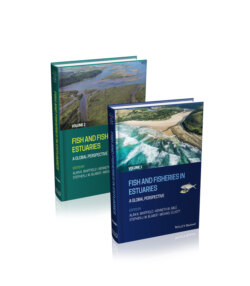Читать книгу Fish and Fisheries in Estuaries - Группа авторов - Страница 67
3.4.1.1 Stock structure, contingents and cohorts
ОглавлениеSpawning populations of species using estuaries, particularly fishes that spawn within estuaries or their connected freshwaters, often have a diverse genetic makeup that is expressed in their particular spawning habits and behaviours (e.g. Secor 1999, Bottom et al. 2005a, 2005b, Secor and Kerr 2009, Levings 2016). Adult stock structure and variability are notably evident in anadromous fishes in which spawning adults return to their natal rivers and estuaries (Secor 2015). In the case of Pacific salmon species (Oncorhynchus spp.), there is diverse dependence on estuaries by fry, juveniles and smolts amongst the several species and races that reflect evolved spawning behaviours and estuarine dependence by fry and smolt stages prior to ocean migration (e.g. Simenstad et al. 1982, Thorpe 1994, Levings 2016). In the case of salmonids, the loss of spawning contingents, and overall losses of diversity in genotypic and phenotypic variability in pre‐smolt juveniles, combined with losses of estuarine nursery habitat, is a particular concern for recruitment success of O. tshawytscha in the Columbia Estuary (USA) (Bottom et al. 2005a, 2005b) and of salmonids in general in many Pacific coast estuaries in North America (Levings 2016, Quinn 2018).
Spawning contingents that display different life‐history patterns and variable dependence on estuaries and marine habitats are recognised for taxa other than salmonids, e.g. the moronid Morone saxatilis in Chesapeake Bay (Secor 1999, Secor & Piccoli 2007), Hudson River (Secor et al. 2001) and St Lawrence River (Morissette et al. 2016) populations. Similarly, research on the sciaenid Argyrosomus japonicus in South Africa indicates that this species has distinct marine and estuarine subpopulations, with the estuarine subpopulation showing critical declines in recruitment and abundance due to overfishing (Childs et al. 2015) with concomitant genetic diversity limitations and incidence of hybridisation with a related sciaenid species (Mirimin et al. 2014). In acipenserids, spawning seasons are highly variable (Bemis & Kynard 1997), and there is evidence of spring‐ and fall‐spawning races, for example, in Acipenser oxyrinchus living in the same estuaries and tidal rivers on the Atlantic Coast of North America and, similarly, dual‐spawning groups of acipenserid species in Europe and Asia (Balazik & Musick 2015). In another example of contingent behaviour, sub‐adults of some individuals of the amphidromous plecoglossid Plecoglossus altivelis ryukyuensis may repeatedly move between freshwater and estuarine habitats during their juvenile stage (Murase & Iguchi 2019).
In the Baltic Sea, the spring‐spawning clupeid Clupea harengus is represented by subpopulations or spawning stocks that are assessed and managed in fisheries as separate units (ICES 2018). Four C. harengus stocks are recognised for management: Baltic proper, Gulf of Riga, Gulf of Bothnia and Bay of Bothnia. Major differences between Gulf/Bay and Baltic proper stocks are related to their salinity tolerances and adaptations. A fifth spawning stock occurs in the Western Baltic, which is largely comprised of adults that feed and overwinter in the Danish Straits or outside the Baltic Sea (Dodson et al. 2019). Baltic C. harengus stocks have spring‐spawning and autumn‐spawning components that exhibit stock‐specific reproductive/recruitment behaviours, although the contribution by the autumn spawners is minor (Ojaveer 1988).
